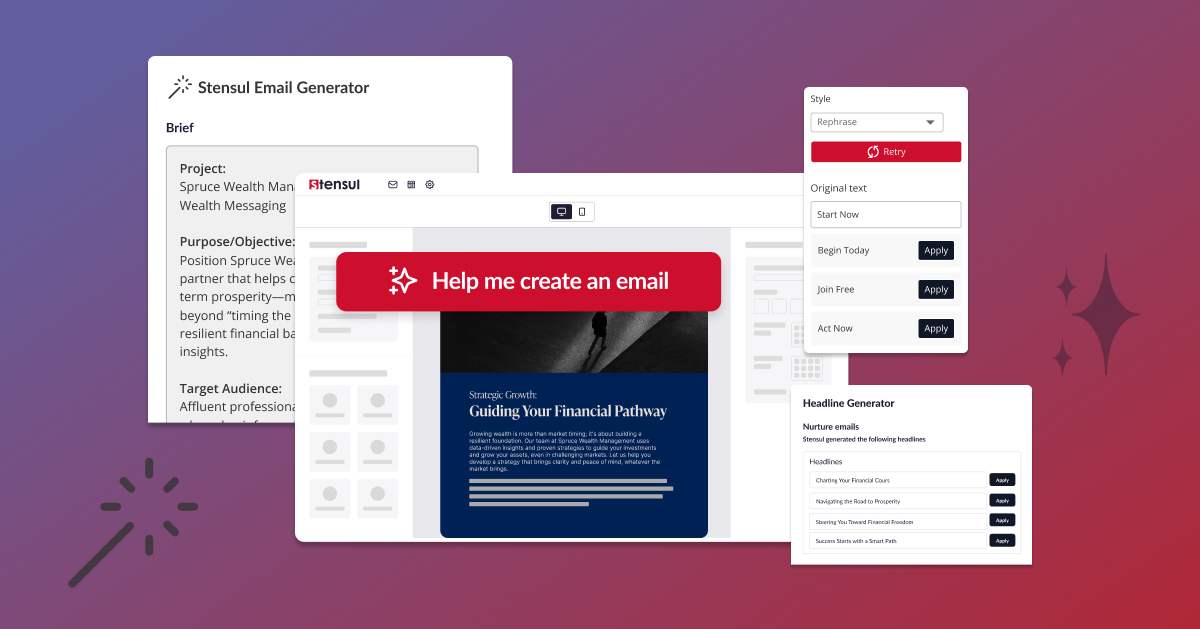We’re more than two decades into the 21st century, but design-to-code and templates and modules are the two most commonly used email creation workflows. These methods were developed just as the web was coming into its own. Not just before the cloud but more important, before collaboration became commonplace, courtesy of things like Google’s G Suite.
What makes this situation all the more remarkable is the world has, as Satya Nadella, Microsoft’s CEO, recently observed, experienced “Two years of digital transformation in just two months.” Yet email creation is still stuck in a time when grunge style was fashionable.
These two approaches to email creation are too difficult, too unreliable, too unpredictable, and take far too much time. In a recent analysis of email production cycles at companies across several industry sectors, Stensul found it often took days or weeks to complete an individual email request.
Even with it taking a long time to produce an email, demand for this digital marketing channel shows no signs of diminishing. That’s because once produced, an email is uniquely able to generate revenue, deliver ROI, and retain customers. And that means the need to find more efficiency and agility in your email production has never been greater.
In a careful examination of the design-to-code and template and modules email creation workflows, Stensul found they’re still very much 1990s methods—an assortment of single-purpose tools used by specialists to perform their tasks in the creation workflow. No tool and no person involved in either process is really connected. This approach results in it taking lots of time to complete single email requests. Errors also abound that contribute to further delays, and the output is often of less quality than creators had hoped for.
Design-to-code: dependent on developers
The design-to-code workflow requires each email to be hand-coded. Doing so takes a lot of time and effort on the part of the developers, and once they have completed the coding, their work isn’t done. If something is found during the approval process that needs to be changed, it has to go back to the developer to be fixed—even if it’s only changing a comma to a period. Then if something unexpected appears during QA, the email returns to the developer to be adjusted before going back again for approval and QA.
In large part because of the dependence on developers as well as all that back-and-forth, the design-to-code workflow can’t scale. In addition to being prone to bottlenecks, the absence of automation limits users’ ability to produce more emails in a short, predictable time frame.
Templates and modules: error-prone
The templates and modules email creation workflow is somewhat more time-efficient than design-to-code. This workflow has email requesters pulling templates or modules from a company repository. Using these frameworks makes the basic building of the email 30% to 50% faster than design-to-code. It’s still dependent on developers, however, only in a different way.
The templates selected may include superseded branding or out-of-date regulatory statements. To correct such things, developers have to get involved. In addition, the code in the templates can get broken and need to go back to developers for repair.
It’s worth noting that emails created in this manner can be completed in one to two weeks, versus the two to three weeks when using design-to-code. But if the issues and errors mount up, whatever time advantage might exist with the templates and modules workflow is quickly lost.
Why you should rethink email creation
Design-to-code and templates and modules are both workflows born in the 1990s. Email volume then wasn’t close to what it is now. Plus, the way many companies operate now is very different from that era. Today, more and more organizations work in a decentralized model where people who need something done often do it on their own.
The amount of emails companies need to create now and in the days ahead—quickly and with quality results—will only continue to increase. The need to reduce dependence on developers—and the value of having them spend their time on higher-value work than fixing broken code in a template—can spell the difference between a marketing operation being efficient and something far less.
How to optimize workflow with an email creation platform
To increase the number of emails your organization creates per month by more than 150%, create them in four hours instead of five to ten days, and have them all be on-brand and responsive, you need to move away from a design-to-code workflow by adding an email creation platform to your marketing technology stack. And to cut the email build time in a templates and modules workflow 5x, with 4x fewer touchpoints, you also need to add an email creation platform to your marketing technology stack.
An email creation platform brings together all involved in the process in a highly connected, collaborative, automation-aided workflow. Individuals without any coding experience can produce effective emails in little time. And there’s no need to worry about compliance or technical quality. It’s all handled by the platform. Because the process takes far less time, there’s now more time available to analyze data, develop communications strategies, and test for ways to achieve better outcomes. Oh yes, and developers will spend more of their time engaged in higher-value work, too.
To learn more about how and why an email creation platform does away with the deficiencies of the design-to-code and templates and modules workflows, download the Stensul eBook, How to optimize the two most commonly used email creation workflows.
And to learn more about what an email creation platform is and does, download the Stensul eBook, An Introduction to email creation platforms.



